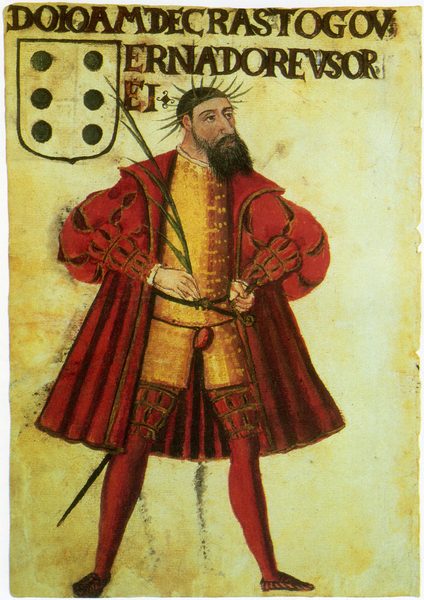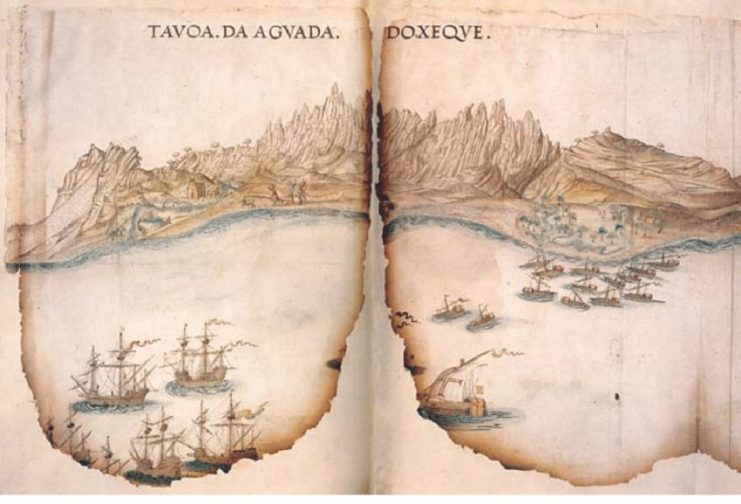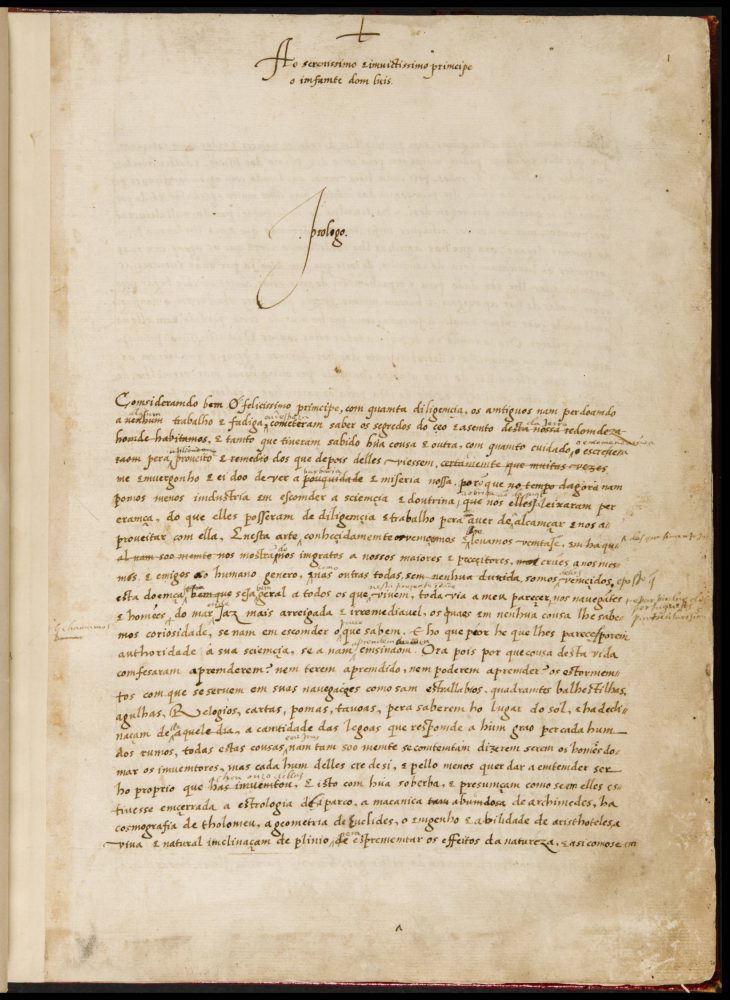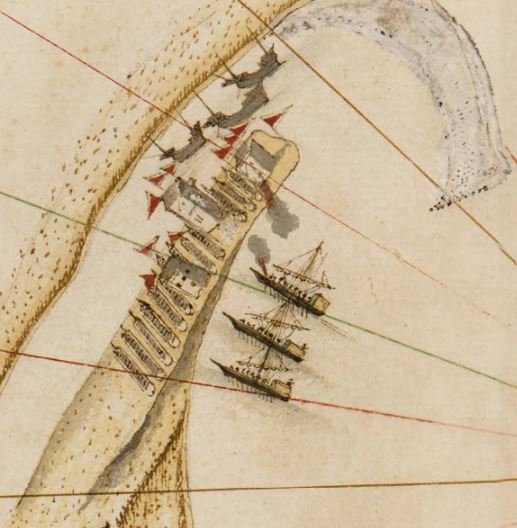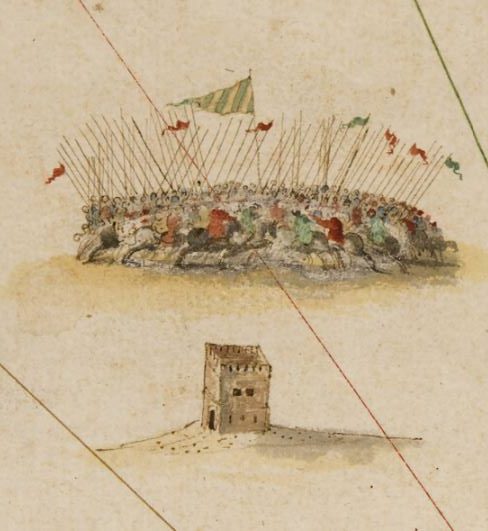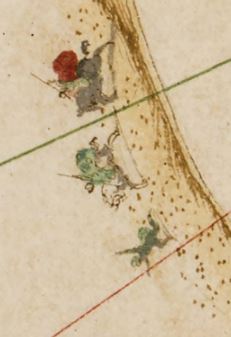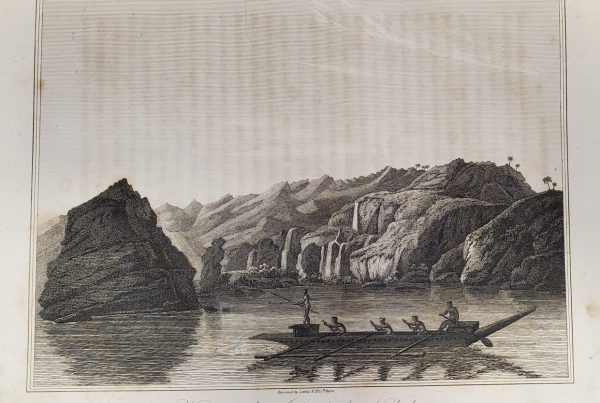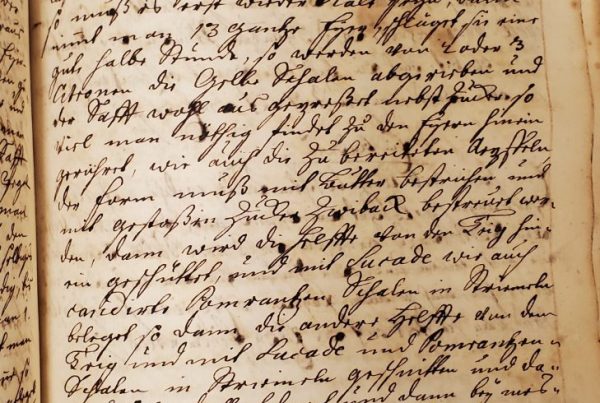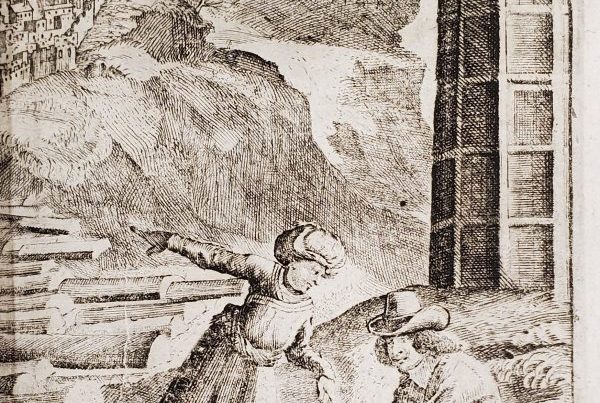Guest post by Roger Lee De Jesus , Researcher at the Center for History of Society and Culture (University of Coimbra, Portugal) and CHAM – Centre for the Humanities (NOVA FCSH / UAc)
João de Castro (1500-1548) is one of the most famous Portuguese navigators of the 16th century. He had a long military career serving the Portuguese kings Manuel I and João III in North Africa (in Tangier and Ceuta) and in Asia (in two voyages, 1538-1542 and 1545-1548). He was governor of the ‘Estado da Índia’ (the Portuguese Empire in Asia) between 1545 and 1548, during a difficult time of political and military tension with Indian sultanates. He died in Goa in 1548, before the end of his term as governor.
His distinguished career was marked by scientific curiosity and knowledge, as evidenced by his authorship of three rutters (roteiros) and other treatises. These rutters are in fact more akin to logbooks, detailing voyages with nautical information and critical observations on geography and the particularities of lands he was observing.
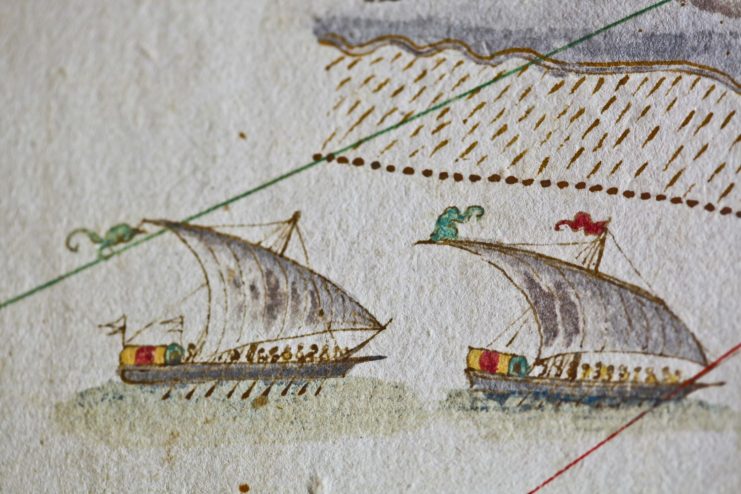
Photo credit: Natasha D’Schommer
All three books were written during his first journey to Asia. The first one, entitled Roteiro de Lisboa a Goa, describes his voyage between Lisbon and Goa in 1538; the Roteiro de Goa a Diu was written while Castro headed a rescue fleet from Goa at the beginning of 1539, on the occasion of a Gujarati-Ottoman siege of the Portuguese fortress of Diu. The last book, Roteiro do Mar Roxo, named in English “The Rutter of the Red Sea,” follows the 1541 Portuguese expedition to Suez, which unsuccessfully tried to destroy an Ottoman fleet being built there. Despite some references to a fourth rutter, narrating a voyage from Goa to Cochin, a manuscript is yet to be discovered.
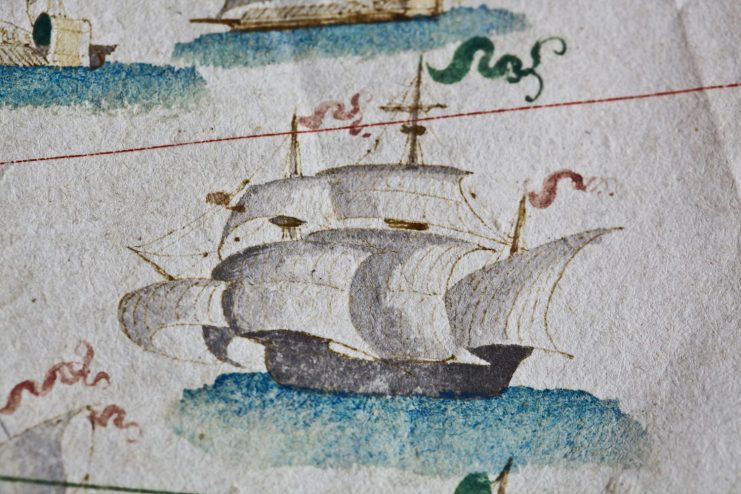
Photo by Natasha D’Schommer
One of only two known copies from the 16th century, the Roteiro do Mar Roxo at the James Ford Bell Library was bought in 1955 from a London bookseller. The other manuscript, held at the British Library, was part of Sir Walter Raleigh’s (1552/4-1618) library. It was later incorporated in Robert Cotton’s collection, and suffered the same fate as the rest of this collection, as part of the manuscript was severely damaged by fire in the 18th century.
The James Ford Bell copy was bought from the descendants of D. João de Castro by Sir Francis Cook (1817-1901). The manuscript dates from the second half of the 16th century and shows annotations by Castro’s grandson, Fernando de Castro, who aimed at publishing the complete works of his illustrious ancestor. This project never came to light.
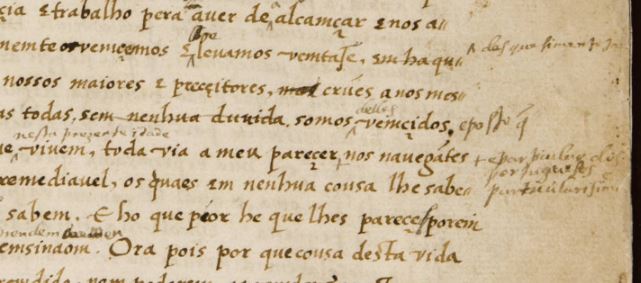
Annotations and corrections; explore further in UMedia.
Similarly to the other rutters, the text is supported by watercolor illustrations, called tábuas, sketched by D. João de Castro, showing the landscape and identifying several places with alphabet letters. These correspond within the text itself, as we can see in the following example.
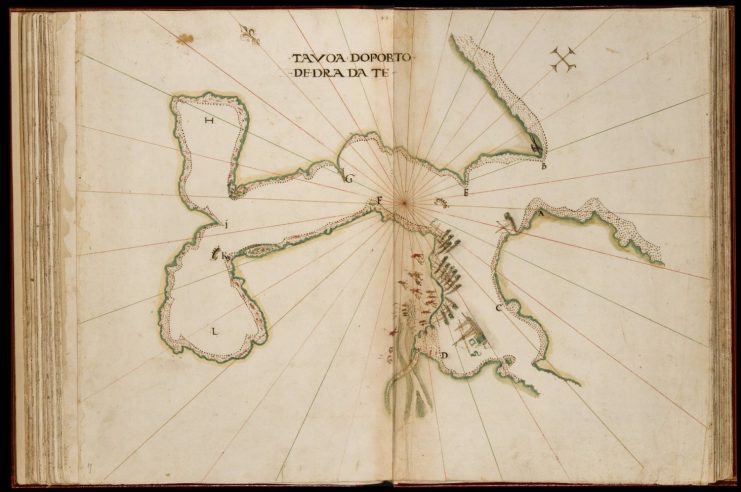
Sketch of Port Sudan (‘Dradate’) with the identification of each letter [pages 98 and 100].
As this book narrates a military expedition, it shows part of the fleet, made up of 80 ships, most of them small rowboats, in the view of the Bab-el-Mandeb.
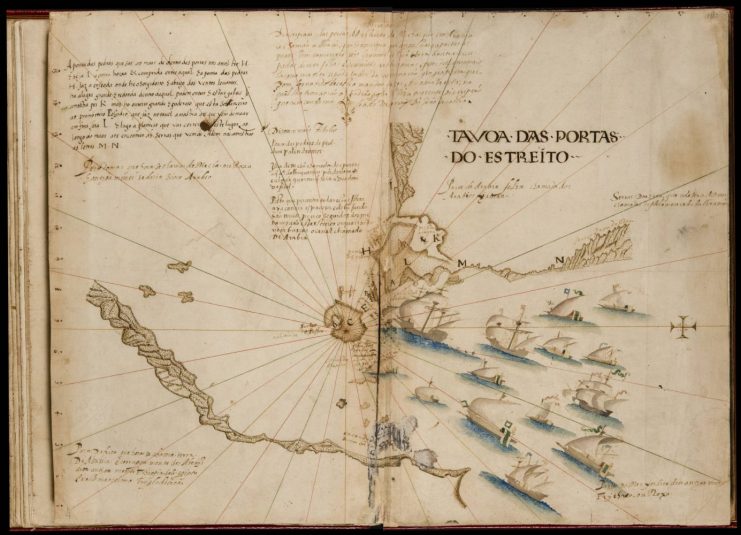
Sketch of the Bab-el-Mandeb [page 45].
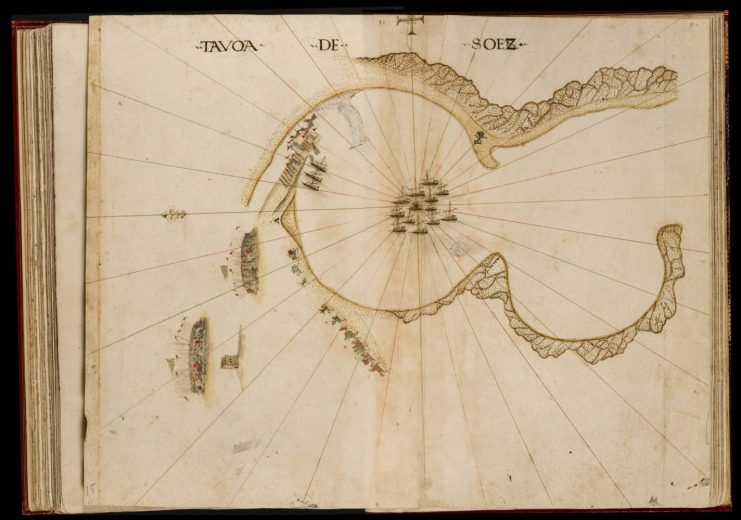
Portuguese attack of the port of Suez [page 182].
The port of Massawa, on the coast of modern Eritrea, is identified by Castro as the old port of Ptolemais Theron. It is shown with some animals, depicting the idea of a wild region, as described in Ptolemy’s Geography.
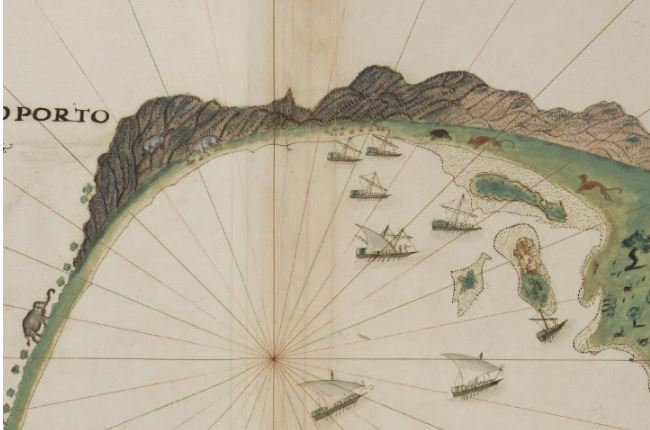
Sketch of Massawa port [page 60].
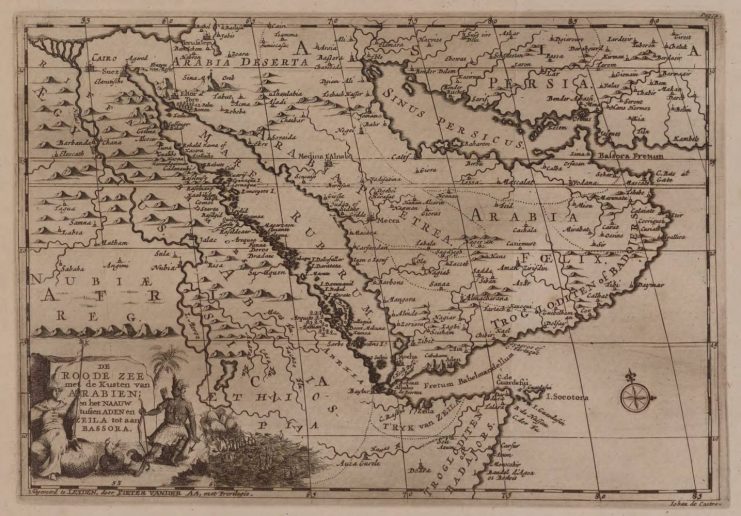
Dutch translation in the series by Pieter van der Aa (Leiden, 1706).
Remarkable scientific works, D. João de Castro’s rutters are fascinating texts for the history of early modern navigations and the dawn of scientific thinking and methods. The rare early manuscripts, such as the one belonging to the James Ford Bell collection, are true treasures for any library.
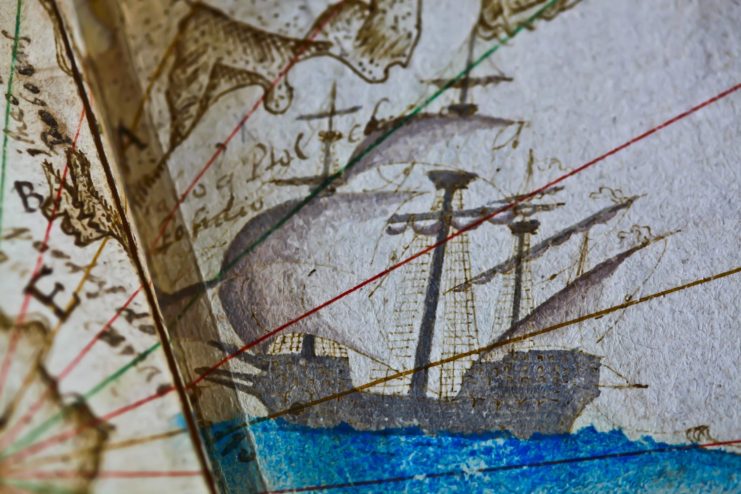
Photo by Natasha D’Schommer.


